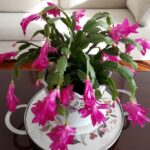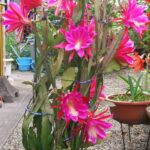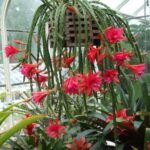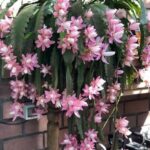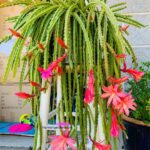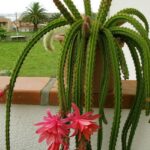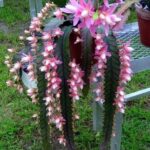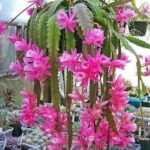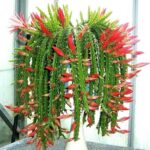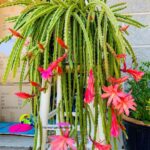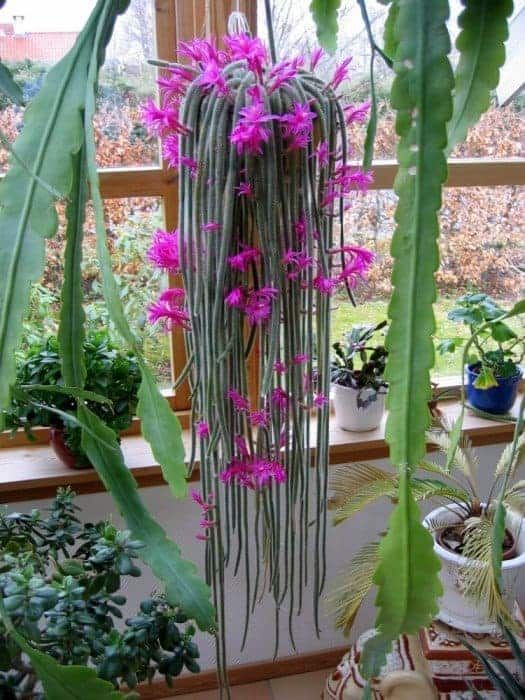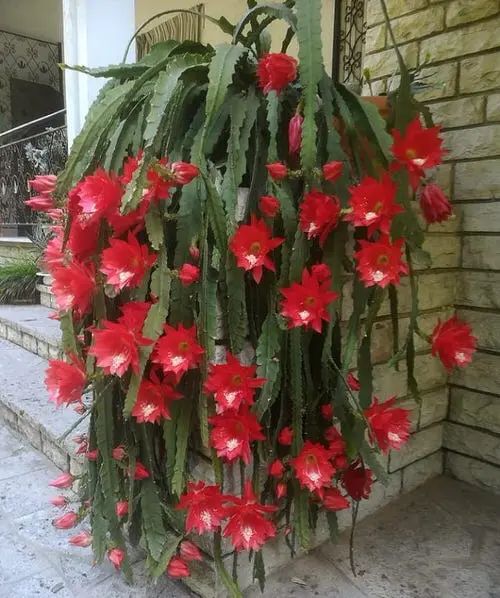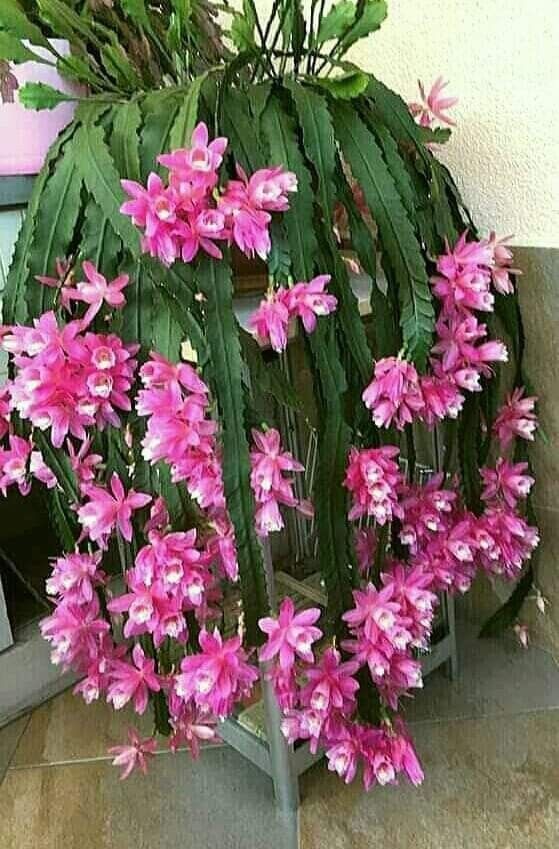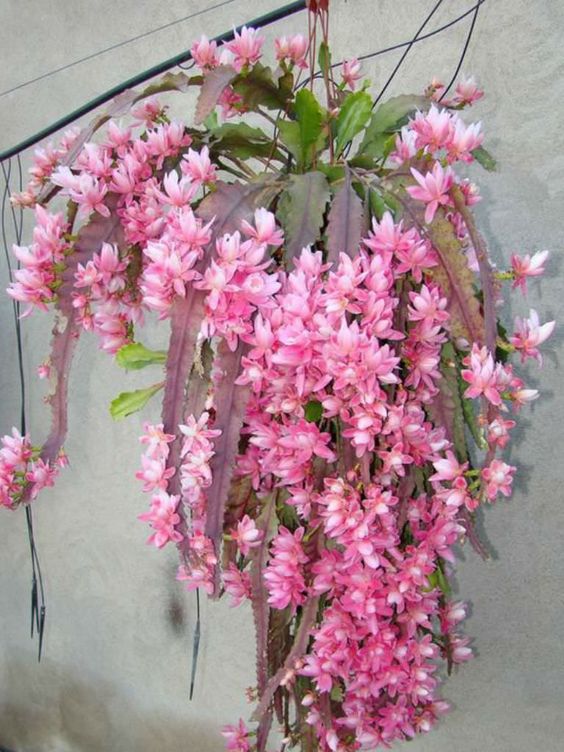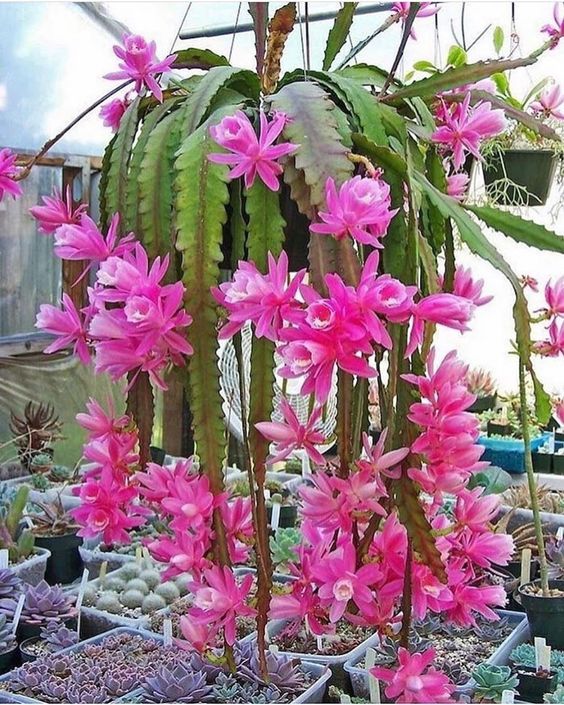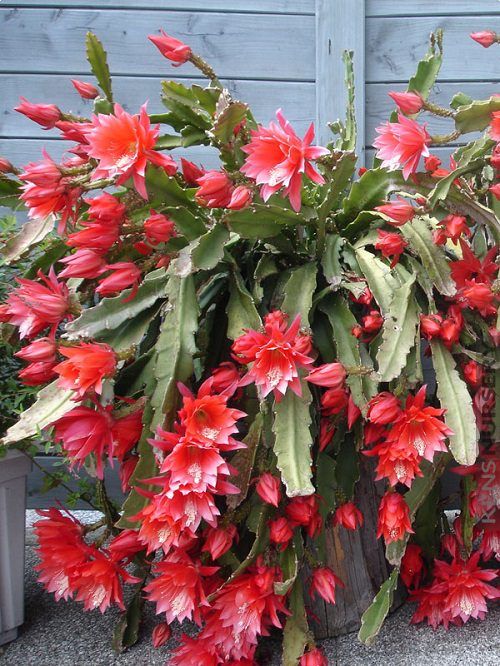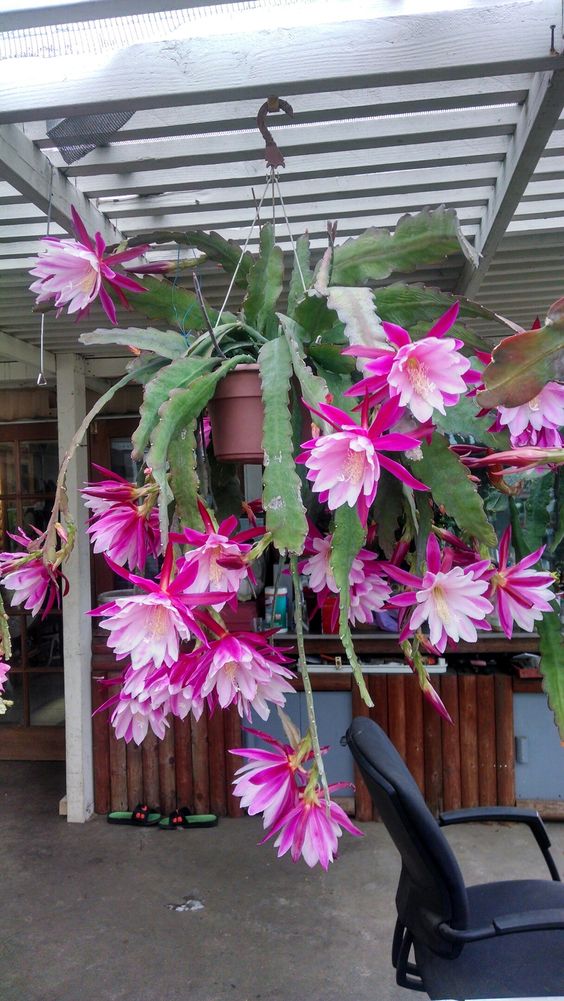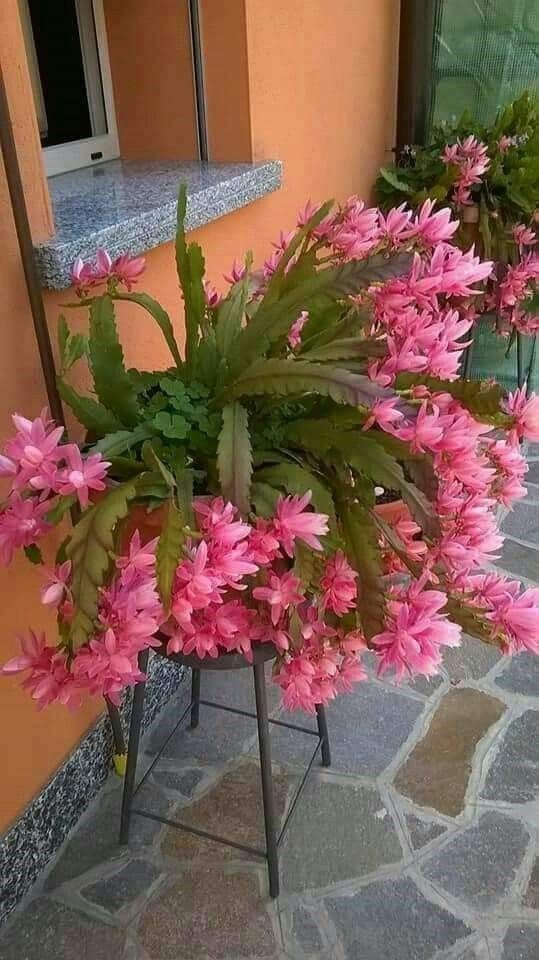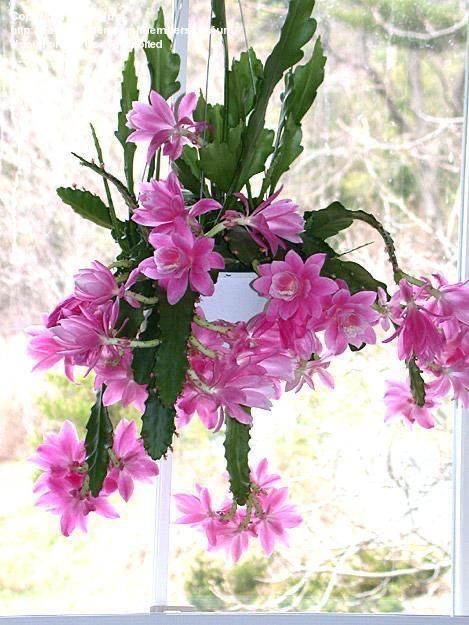Epiphyllum is a genus of tropical succulents often called orchid cacti or climbing cacti. There are over a dozen species and many associated hybrids of varying shapes and sizes. They usually have long, flat, non-spiny and trailing stems.
With proper care, they present bright, large, fragrant and night-blooming flowers in spring or summer. In the wild, these mostly epiphytic plants grow on branches or tree trunks rather than developing roots in the ground. They absorb the moisture and nutrients they need from the moist environment around them.
In a garden landscape, the hanging stems of orchid cacti look great in hanging baskets. Despite their common name, they do not like full sun and dry air like regular cactus species. Epiphyllum thrives best in warm, moist and shady locations that mimic its natural tropical forest habitat. This makes it a good choice as an easy-to-grow, slow-growing bathroom plant.
Orchid Cactus Care
Unless you can provide your epiphyllums with mild temperatures, dappled sunlight, humidity, and a porous potting mix, it’s best to grow them indoors. They like similar conditions to orchids and bromeliads. If grown outdoors, they should be protected from strong winds and provided with adequate air circulation.
Light
Orchid cacti thrive in filtered sunlight that mimics the lighting conditions they receive in their natural tropical forest habitat. A few hours of full morning sun should be fine, but keep them away from full midday sun to avoid burns or white crusting. Outdoors, growing in a hanging basket under the shade of a tree works well.
Do not place your Epiphyllum in a room where the lights remain on for a long time after sunset, as this may affect flowering the following year.
If your plant gets too much light, it can cause wilted growth and yellowing. Leggy, delicate growth can be the result of too little light.
Floor
Your epiphyllum should not grow directly in the ground. Normal soil is too compact and the roots cannot cope with it, resulting in plant death. Use a loose, fast-draining potting mix with additional lightweight and porous materials to promote drainage. An azalea mix with added perlite, bark, cocoa chips or pumice can work well.
Water
The right balance of water is the key to successful growth. Unlike their traditional cactus relatives, orchid cacti require regular watering throughout the growing season. The potting soil should be moist but not soggy. Ideally, the top third of the potting soil should dry out before watering again. In winter, reduce watering and move the plant to a cooler location. This will help produce healthy, large flowers next season. Using distilled or filtered water instead of tap water is beneficial for these delicate plants.
Branch dieback or rust spots can be a problem if your soil is too wet, especially when temperatures are low. If this becomes a problem, remove the diseased branches, repot the plant in a dry and fast-draining mix, and be more conservative with watering.
Temperature and humidity
When growing outdoors, it’s best to grow Epiphyllum in pots or hanging baskets so you can bring these tender plants indoors when temperatures drop. They will not survive in frost or when temperatures drop below 32 degrees Fahrenheit.1
If you keep your orchid cactus indoors, it may need a different location in the winter than it does during the growing season. From spring to fall, temperatures up to 90 degrees Fahrenheit are best, and in winter, a cooler location that still provides filtered light is ideal. Temperatures of around 50 to 58 degrees Fahrenheit and away from radiators and cold drafts are optimal. When the flower buds appear, move them back to a warmer place.
Epiphyllum requires higher humidity to thrive. It may be helpful to stand on a tray of wet gravel (being careful not to let the plant’s roots absorb water), mist the stems, or use a humidifier.
fertilizer
Conservatively fertilizing your epiphyllum a few times a year is beneficial to encourage strong growth and bud stimulation. However, since they occur naturally in one
 careyfashion.com Carey Fashion
careyfashion.com Carey Fashion

